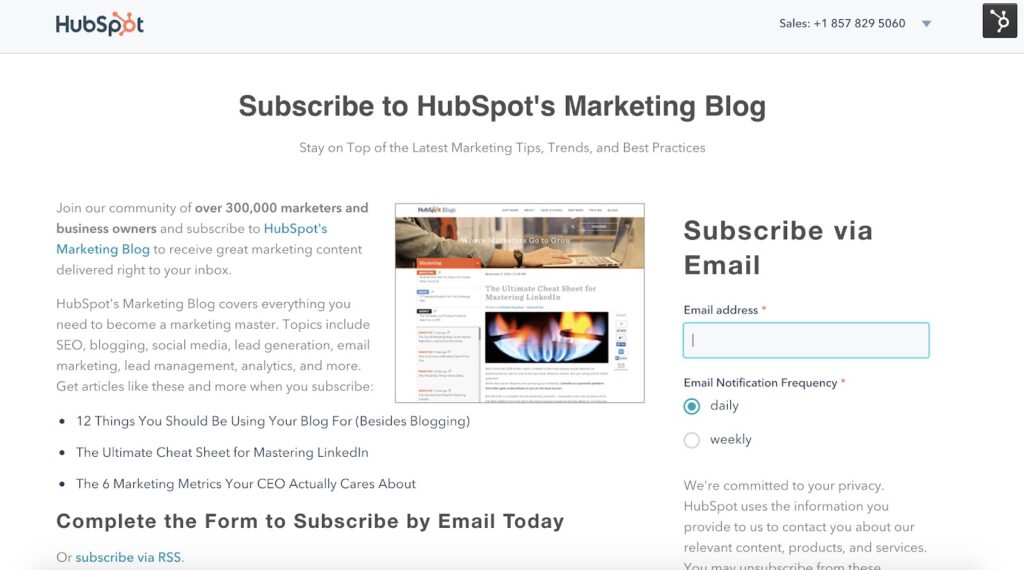In 2019, there were 3.8 billion estimated email users across the globe. With half of the world’s population on email, and the ability to reach people at any time of day, email marketing remains a crucial technique to build a customer base.
So how do you attract people to your email list? There are a few important steps, but it all starts with an email sign up web form.
What Is An Email Sign Up Form?
An email sign up form is used to collect email addresses from leads and potential customers. These forms are are embedded on a web page where a visitor can enter their email address in a form field to be added to your email newsletter.
The best thing about email opt-ins is that you can build a pipeline of leads to nurture and communicate with. Over time, your email list can turn into a valuable source of revenue as cold prospects get to know and trust you while you stay top of mind (or top of inbox).
But what do you do if you're not getting enough subscribers into that pipeline? After all, email marketing is only as good as its list. Here are our tips for how to get more mailing list signups.
How to Get More Subscribers for Your Email List
- Monitor your metrics.
- Place calls to action on high-traffic pages.
- Be mindful that your conversion rate may not be the problem.
- Use contrasting colors.
- Consider placement.
- Offer something of value.
- Reduce the friction.
- Try out different offers.
- Consider user intent.
- Reduce the number of forms and calls to action on a page.
- Use a form builder with smart field capability.
- Use pop-ups.
- Test everything.
1. Monitor your metrics.
Conversion rate refers to the percentage of website visitors who converted on your opt-in. In order to calculate conversion rate, you divide the number of conversions from that form or offer by the amount of traffic to the page or post it's on.
If you have a form or offer that coverts 3% of the website visitors that see it, that form or offer is more valuable than one converting at a rate of .75%. With 1000 website visitors, the first form would generate around 22 more leads than the second (all other things being equal). That's why conversion rate optimization is so important.
2. Place calls to action on high-traffic pages.
Conversions to your email signup form only happen if the form is seen. For this reason, you should be putting the opportunity in front of your website visitors. Identify your highly visited pages and put your form or calls to action (CTAs) on them to maximize visibility.
3. Be mindful that your conversion rate may not be the problem.
If you don't have a large amount of traffic, finding ways to increase traffic may be a more worthwhile activity. As previously mentioned, conversions only happen when there's an opportunity to convert. With no traffic, there's no opportunity. You won't have the means to increase conversion rate if the starting number is zero, and if traffic is low, your conversion rates may not be statistically significant.
4. Use contrasting colors.
The last thing you want is for a potential subscriber to miss the opportunity to convert simply because they didn't notice it was there. You want to draw attention to your conversion elements, making them attention-grabbing and bold. One way to do this is by using contrasting colors that stand out on the page.
5. Consider placement.
Prominent page placement is a game-changer when it comes to increasing conversion rates on email signup forms. A form or call-to-action can go in a number of places, including:
- The top of the page
- Within the text of the page
- In the sidebar
- At the bottom of the page
- As a popup generated from a user action
You'll want to test which placements work for your conversion rates. For example, if people aren't making it to the bottom of a page or post, they may not see your call-to-action. Through testing, you'll be able to determine the placements that work best for your audience.
6. Offer something of value.
The majority of today's internet users know that giving up their email address may result in email solicitation or, in some cases, spam. That may not be your intention, but that doesn't erase their caution. To overcome their caution, you must incentivize them to give it up.
Promising high-value content that they want, providing social proof that your newsletter is valuable, holding giveaways or contests, and being transparent about what they can expect signing up are all ways to provide the incentive.
7. Reduce the friction.
"Dollars flow where friction is low."
— Brian Halligan, INBOUND 2019
The more friction that a visitor encounters, the less likely they'll sign up. Ultimately, you want to keep the momentum going to completion.
One way that you can reduce friction is by removing form fields and making the process of signing up faster. The amount of required form fields should be proportional to the amount of value you're providing. Too many will cause the user to bounce. Instead, ask for less up front and have your team gather what they need after the individual has become a lead.
8. Try out different offers.
Don't be afraid to scrap an offer if it seems to be under-performing. Maybe the word "newsletter" fails to appeal to your specific audience. Switch it out with something different and monitor your metrics to see what happens.
9. Consider user intent.
Your website visitors landed on a particular page for a reason. If your offer doesn't help them meet that need in some way, they may not be incentivized to convert.
Here's an example to illustrate this point:
Let's say you have a blog post that compares your product/service to a competitors. The visitor arrived here because they want to see how well you match up with others in the industry.
But if your offer is something like "Reasons Why You Should Buy [Product/Service]," you may fall flat. If the user is already comparing providers, they already know they the value of the product or service; they're just figuring out which provider to go with.
In this scenario, an offer suited to this intent, such as a free sample or product demo, may work much better.
Consider the intent on your pages and craft offers that match up with that intent.
10. Reduce the number of forms and calls to action on a page.
As the old saying goes, "A confused mind says no." If you present a website visitors with too many choices, you run the risk of driving them away completely. Consider presenting one offer or conversion element per page. If that's not possible, find other ways to reduce the confusion and make it clear exactly what you want the website visitor to do.
11. Use a form builder with progressive field capability.
Some form builders (like HubSpot's) have the ability to remove form fields if the CRM already knows the information. For users who may be converting a second time, HubSpot may already already know some of the information, and it will remove those unnecessary forms, removing the friction for the user to type that information again. After all, dollars flow where friction is low.
12. Use pop-ups.
Pop-ups may seem intrusive, especially if used incorrectly, but the fact of the matter is that they convert! By using a pop-ups tool, offering something of value, and using specific triggers (such as exit intent), you can create a pop-up experience that isn't annoying and generates leads.
13. Test everything.
Testing has been mentioned already in a few of the tips above, but it stands to get its own section. Improvement doesn't happen in a vacuum, and leads don't increase because of intuition. By testing hypothesis and continuing to iterate improvements, you'll learn about your audience, be mindful about your metrics, and increase email signups as a result.
A lead might provide their email address for any number of reasons — to receive details about sales, blog post notifications, a discount code or information about your business. Either way, that makes your email sign up form one of the most important things on your site. And while they're simple to create with the help of a form builder, you’ll still need to put some time and thought into how you build, format and embed your form.
Let’s go over some ways to create a sign up form that will get more leads on your email list.
Email Sign Up Form Best Practices
Whether you’re looking to reach ten people or ten million, you’ll need to create a sign up form that gets people excited to sign up.. Here are some best practices that will help you create a high-converting email sign up form
1. Make the Value Exchange Clear
Your leads should be able to answer the question, “What’s in it for me?” when they complete your form. An email address is a valuable commodity and it should be worth their while to sign up. Add a short description to the top of your email sign up form that describes what your lead will get in return for signing up and make it good. For example, instead of saying, ”Sign up for our weekly newsletter” you should say, “sign up for our newsletter and receive exclusive deals and offers.” A strong incentive means your website visitors are more likely to convert.
2. Use a Double Opt-In
You don’t necessarily need more sign-ups as you need quality sign-ups. You need people who actually want to receive your emails — more is not always better. Ensuring quality sign-ups means less fake leads wasting your time and less chances that you’ll end up in the SPAM folder or blacklisted.
To ensure quality sign-ups on your form, consider using a double opt-in. This is the type of email subscription that confirms your lead wants to be added to your email list twice. The first time is when the lead enters and submits their information using your web form, and the second time requires the lead to click an additional CTA (usually in their inbox) that confirms their submission. A double confirmation means a high-quality relationship with your leads.
3. Keep It Simple
A lead should be able to look at the form, enter their information, hit “submit” and carry on with their lives within a matter of seconds. Successful email sign up forms are straightforward and clear. If your form is too complex, you risk losing the interest of your website visitors.
Don’t get greedy and ask for too much information right away — if you do, there is a large chance you will turn people off and drive them away from your website. Keep your email sign up form as a way for visitors to sign up for emails.
4. Consider Place and Time
The placement of your email sign up form on your website matters. You should think about how you want your website visitors to find your form. For example, do you want your form to pop-up on the page the second someone lands on your website? Do you want them to scroll down to the bottom of your homepage to find your form? Or do they need to land on a specific page on your site?
Form placement isn’t one-size-fits-all. Think about where most visitors land on your site, how your buyer personas want to interact with your brand and the overall user experience.
Consider questions like, “Will my target audience get frustrated with a pop-up the second they enter our site, or will they find it helpful?”
5. Send a Kickback Email After Submission
Once someone completes your form, thank and welcome them.
A kickback email is an email that gives your new lead something in return for their information. In the case of an email sign up form kickback email, you’ll want to welcome your new lead and perhaps offer them links to useful content. Thank them for their interest and get them excited about their decision to give you their personal information. This is also where you can provide your new leads with their discount codes, details on future sales, why you value their interest in your business, and how you will support them in the future.
Great Email Newsletter Signup Form Examples
Now that we’ve reviewed email sign up form best practices, let’s dive into some examples to provide you with some inspiration while creating your own form.
1. HubSpot’s Marketing Blog
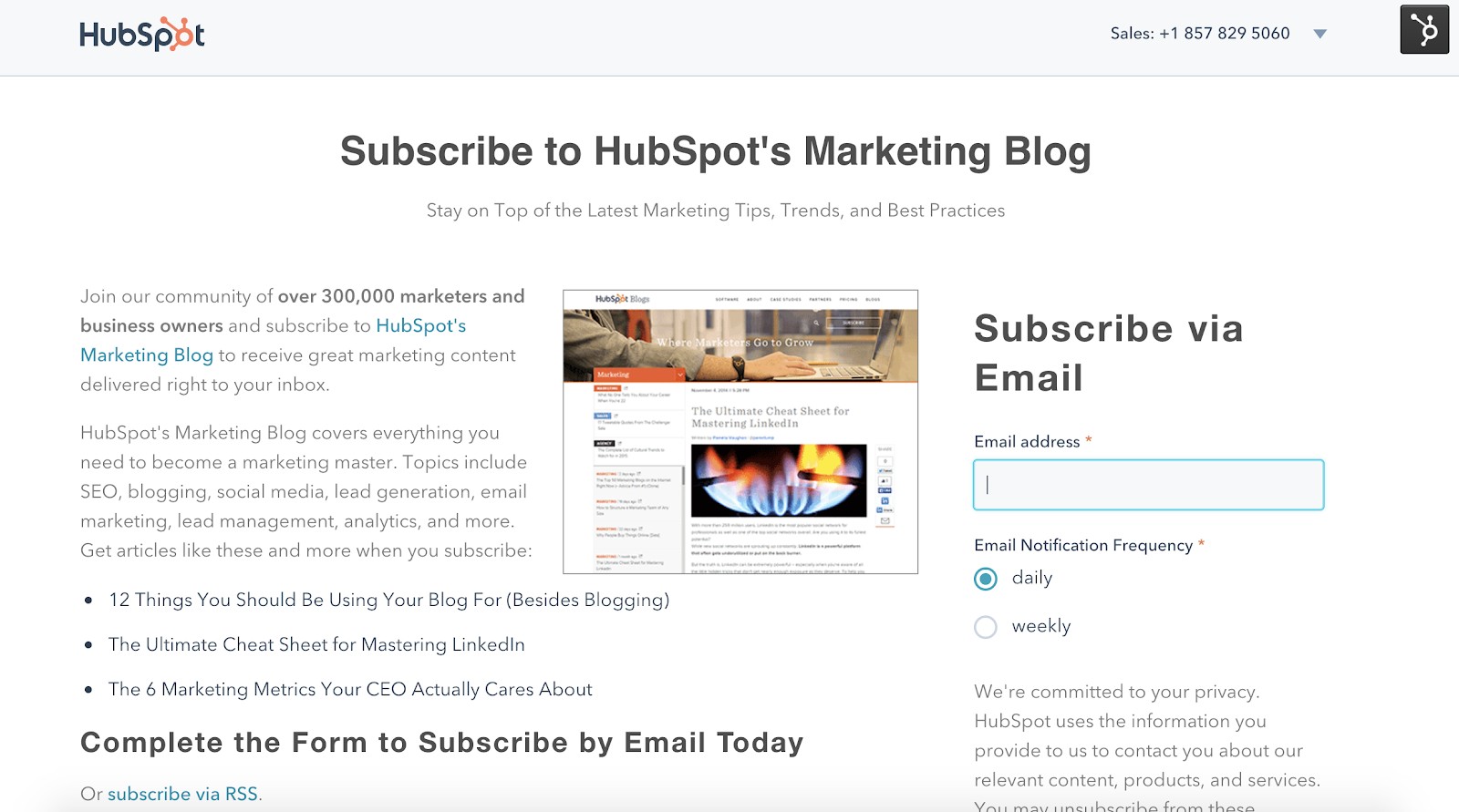
Source: HubSpot
HubSpot’s marketing blog has an email sign up form with clear benefit statement. Any website visitor could look at this subscription landing page and understand what they will get from signing up in a matter of seconds.
By using a separate landing page for this form, HubSpot is able to eliminate any confusion about what leads are signing up for.
There is also a feature on the form that requires leads to determine whether or not they want to sign up for a daily or weekly subscription. This provides clarity for the lead signing up and ensures a quality subscription for HubSpot.
2. theSkimm
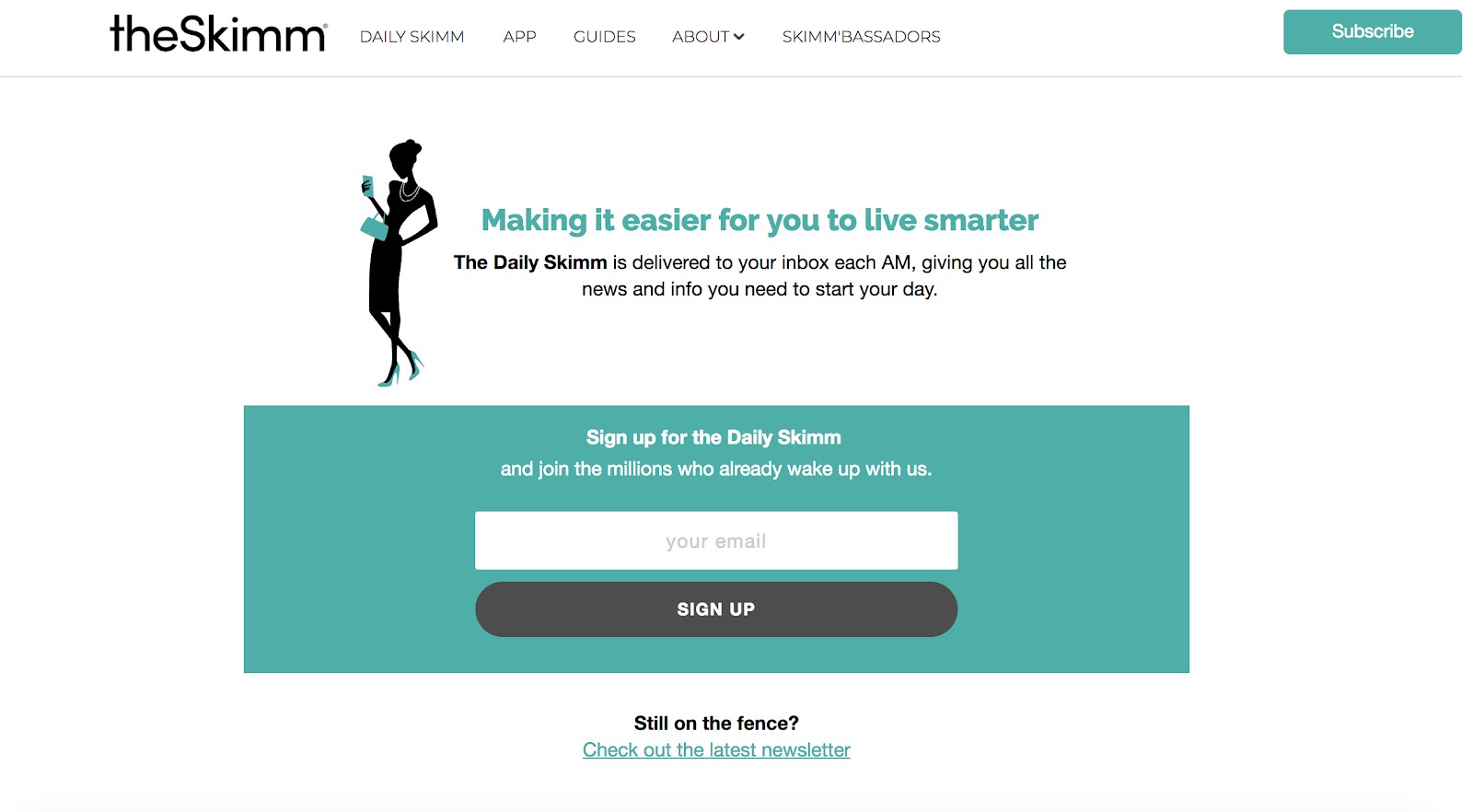
Source: theSkimm
When you head to theSkimm’s website, the first thing you see is their email sign up form. That’s because their entire business revolves around a subscription. theSkimm is a daily email about the top news stories around the globe, so it would only make sense for their homepage to contain their sign up form.
Above their email sign up, there is a short, straightforward description about how theSkimm works. They provide leads with social proof by mentioning the “millions” of other people who have subscribed to their emails. And lastly, they show a bit of personality and humor with a line beneath the form that says “Still on the fence?” and allows potential leads to read their latest newsletter as well as check out a few celebrity Tweets about how great theSkimm is.
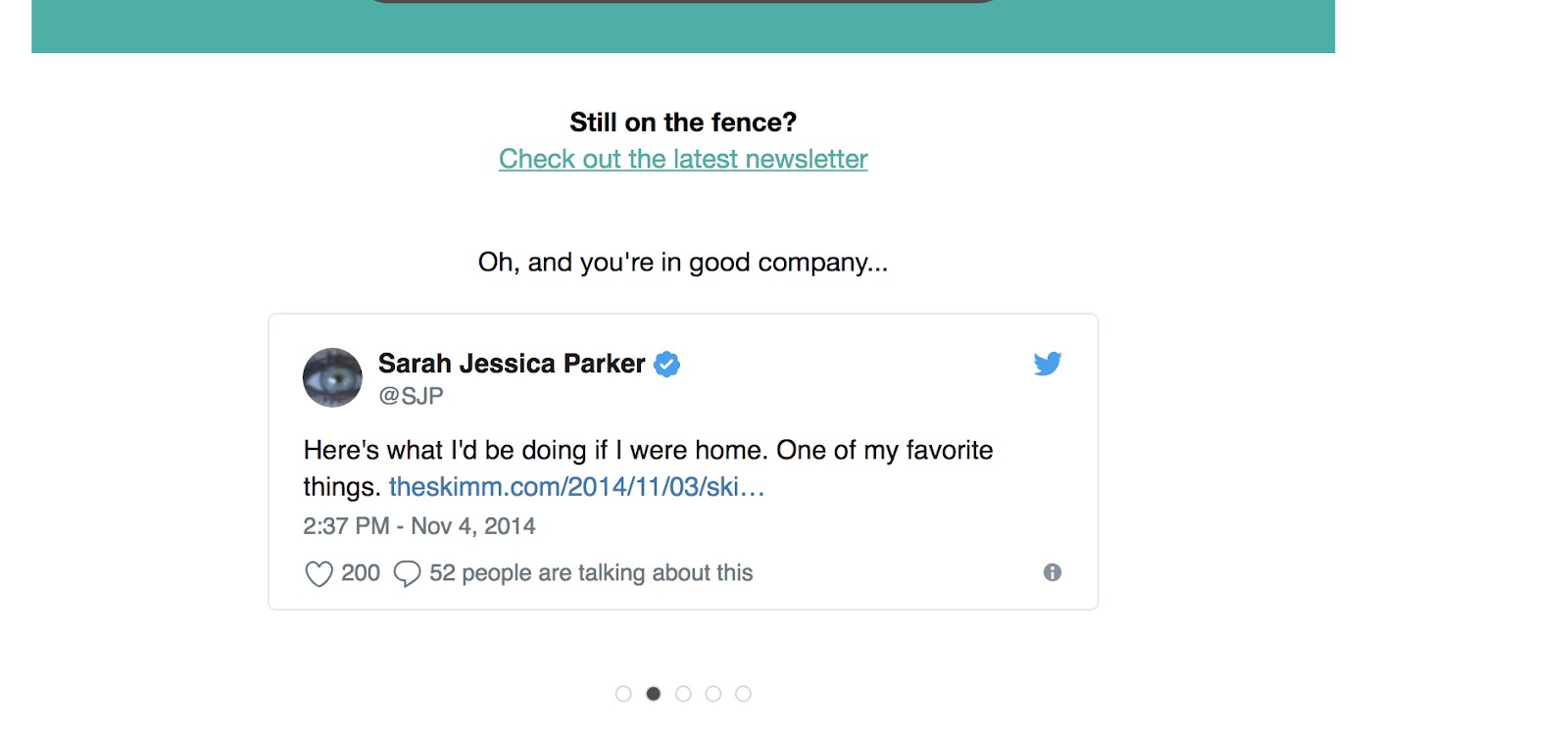
Source: theSkimm
3. Anthropologie
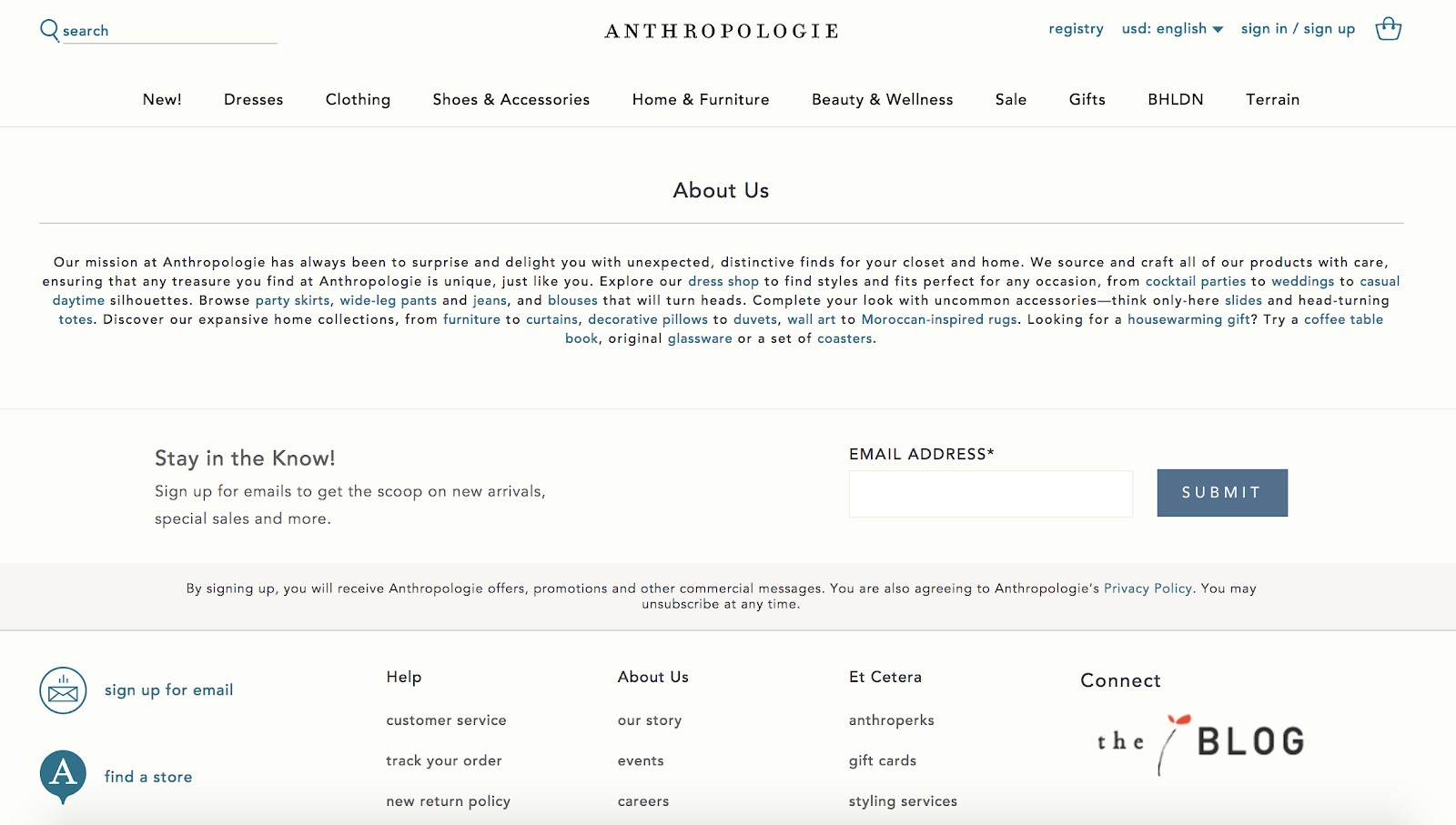
Source: Anthropologie
Anthropologie places their email sign up form towards the bottom of their homepage after users have had a chance to look around and become familiar with the site. Their signup form has a short description about what leads can expect once they sign up . Anthropologie also respects their visitors’ time by simply asking for an email address to sign up.
4. Lulus
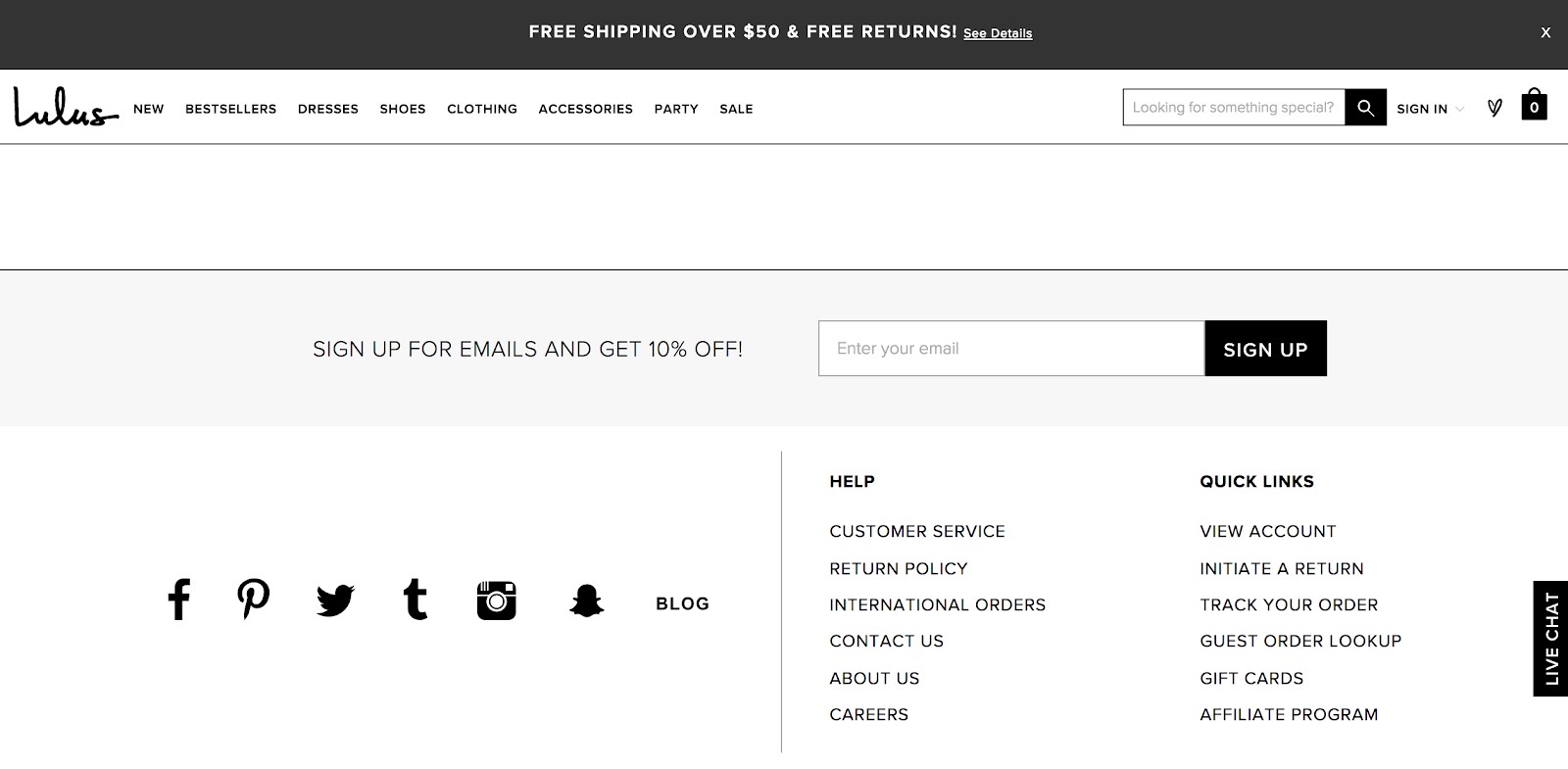
Source: Lulus
Lulus form is located towards the bottom of their homepage. Their email sign up form gets website visitors excited about converting with an offer: a 10% discount code upon sign up. The form is simple and only requires an email address. After form submission, new leads receive a kickback email that welcomes them and also provides them with the code, as promised.
5. Quest Nutrition
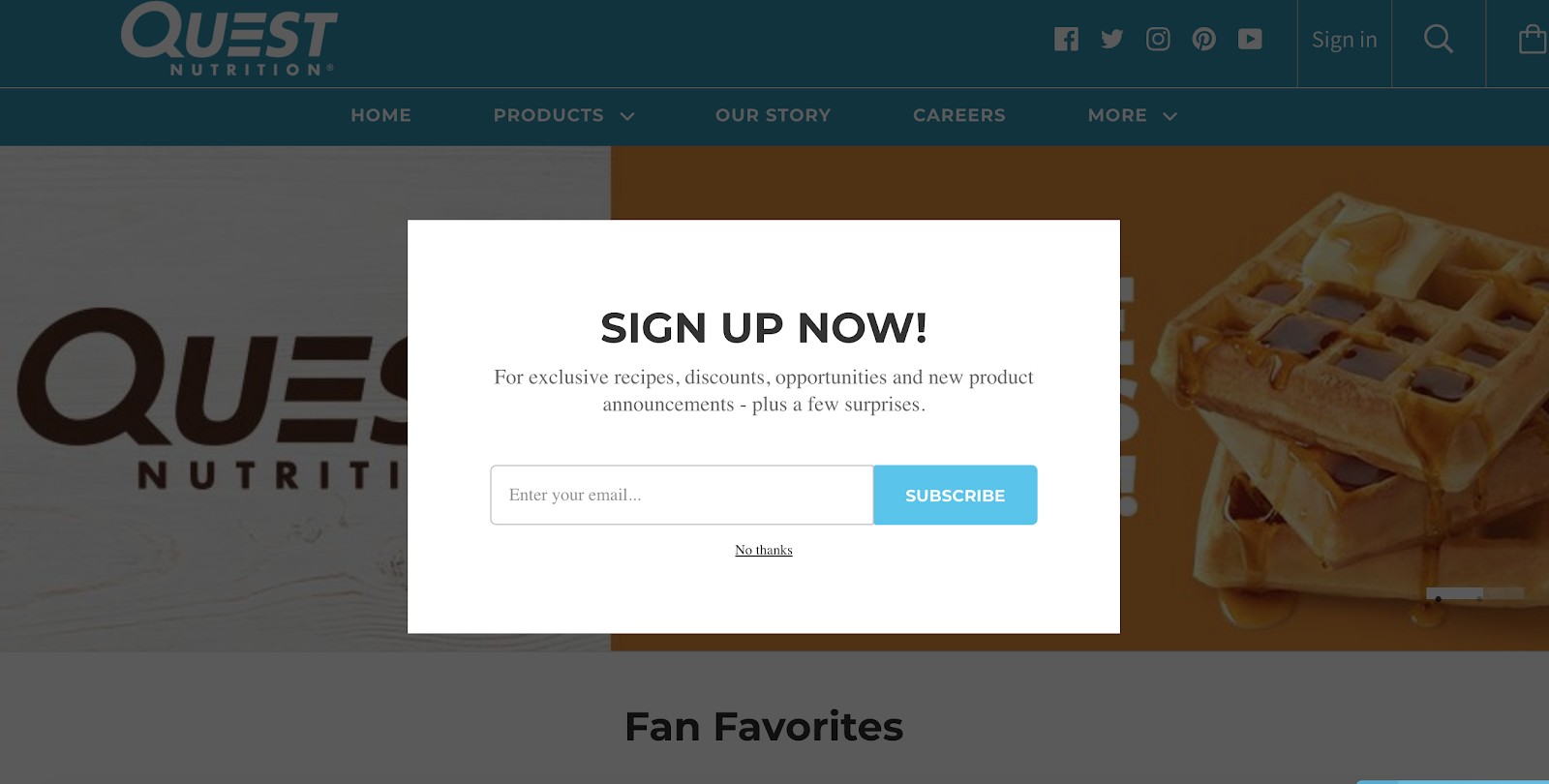
Source: Quest Nutrition
Quest Nutrition’s form is in a pop-up window that dims the background, eliminating any distractions. The form offers incentives like recipes, discounts and surprises for visitors to sign up. Only an email address is required to sign up. Website visitors have the option to bypass the pop-up and look around the site instead.
Email sign up forms are a simple, efficient and effective way to obtain leads, create more conversions, and increase your overall sales. You’ll reach your audience with email sign up forms that are straightforward and embedded on a convenient location on your website.
So, take a few minutes to create your own email sign up form and get started broadening your customer base, developing relationships with your potential customers and increasing your number of leads today. From there, you can close the gap between lead and customer by doing email marketing.
Editor's note: This post was originally published in October 2018 and has been updated for comprehensiveness.

